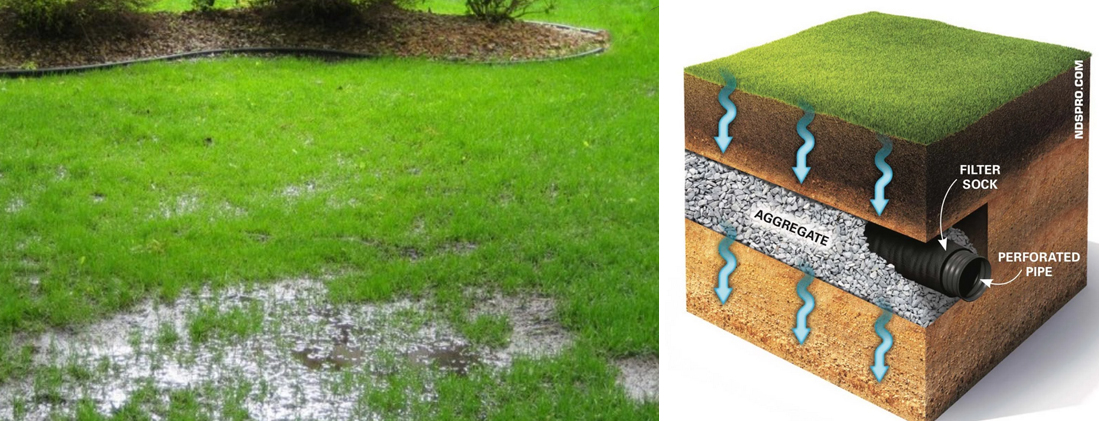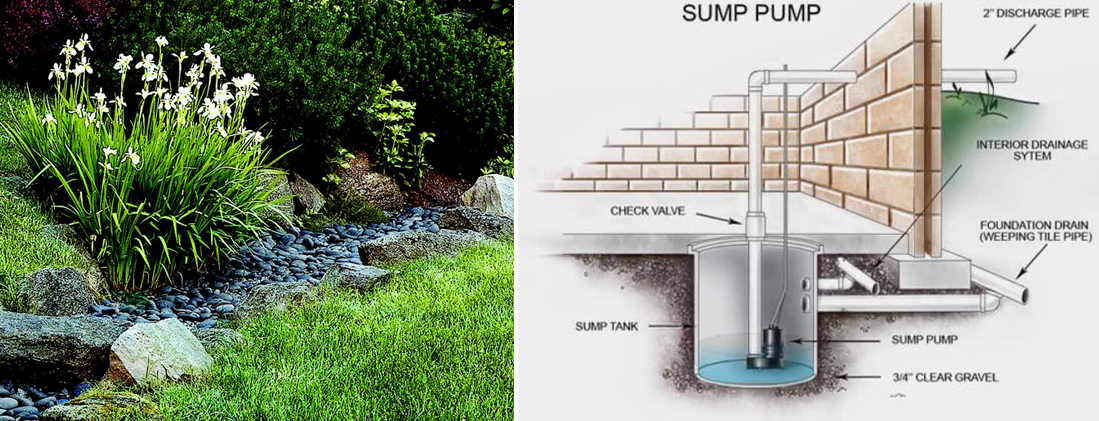Atlanta’s rainy days may have left you with an unwelcomed gift — standing water. Here are some ways to address the problem.
Decide Where You Want the Water To Go
You’ll want to ensure the water does not drain towards your neighbor’s property. Also, if you want water to drain at the street, you may need to get permission from local authorities to drain water into existing storm sewers.
Try a French Drain
A French drain is a simple concept using a sloping tube underground from the spot where water has concentrated to wherever you wish it to exit. Of course, you will need to consider where you want the water re-routed. We recommend finding an area along the slope on your side of the boundary where constructing the drain is easiest (e.g. free of obstructions). Make sure you mark the trench lines before you begin digging the drains.
Create a Swale
Swales are depressions that follow the contour around the base of a slope (natural or created), that channels storm water from one place to another. They also filter runoff along the way by allowing it to sink into the soil. Plants on a swale’s gently sloping banks — even down the center of the channel itself — take up much of this water. Fast-draining soil is also key. The addition of a perforated pipe laid in gravel underneath can help handle heavy water flow.
Consider landscaping your swale by lining it with river rock. Along the sides, try evergreen ferns, sedges, winterberry, grasses, and/or irises that thrive in moist conditions.
Improve the Yard Grade
The single most important factor in preventing your yard from flooding is the slope of your yard — which determines where and how rainwater will drain. For efficient drainage, your yard should have a minimum slope of 2 percent away from your house—that’s a fall of two feet for every 100 linear feet of yard. Improve the grade by spreading topsoil along the foundation and in low areas to facilitate drainage.
Protect the Foundation
If you have basement windows and window wells, flooding can spell big trouble. Because they are located below ground level, these are prime spots for water to collect and inevitably leak into the home. Installing a collection tank with a sump pump will help ensure your home stays dry. When the tank fills with water, the pump turns on and pumps the water out and away from the house. Sump pumps are quite common in the Great Lakes region, but becoming better known in the south in recent years.
Create a Rain Garden
If low-lying areas are consistently under water after a storm, why not turn those swampy patches into attractive, all-natural solutions? Rain gardens can fill depressions in the ground with porous soil and plants that thrive in standing water, such as ferns and Japanese silver grass.
Keep Your Yard Safe
When you put in the time and money to have a custom deck or fence installed in your yard, you don’t want it ruined by standing water. Take the above precautions to ensure your investment doesn’t go to waste!



